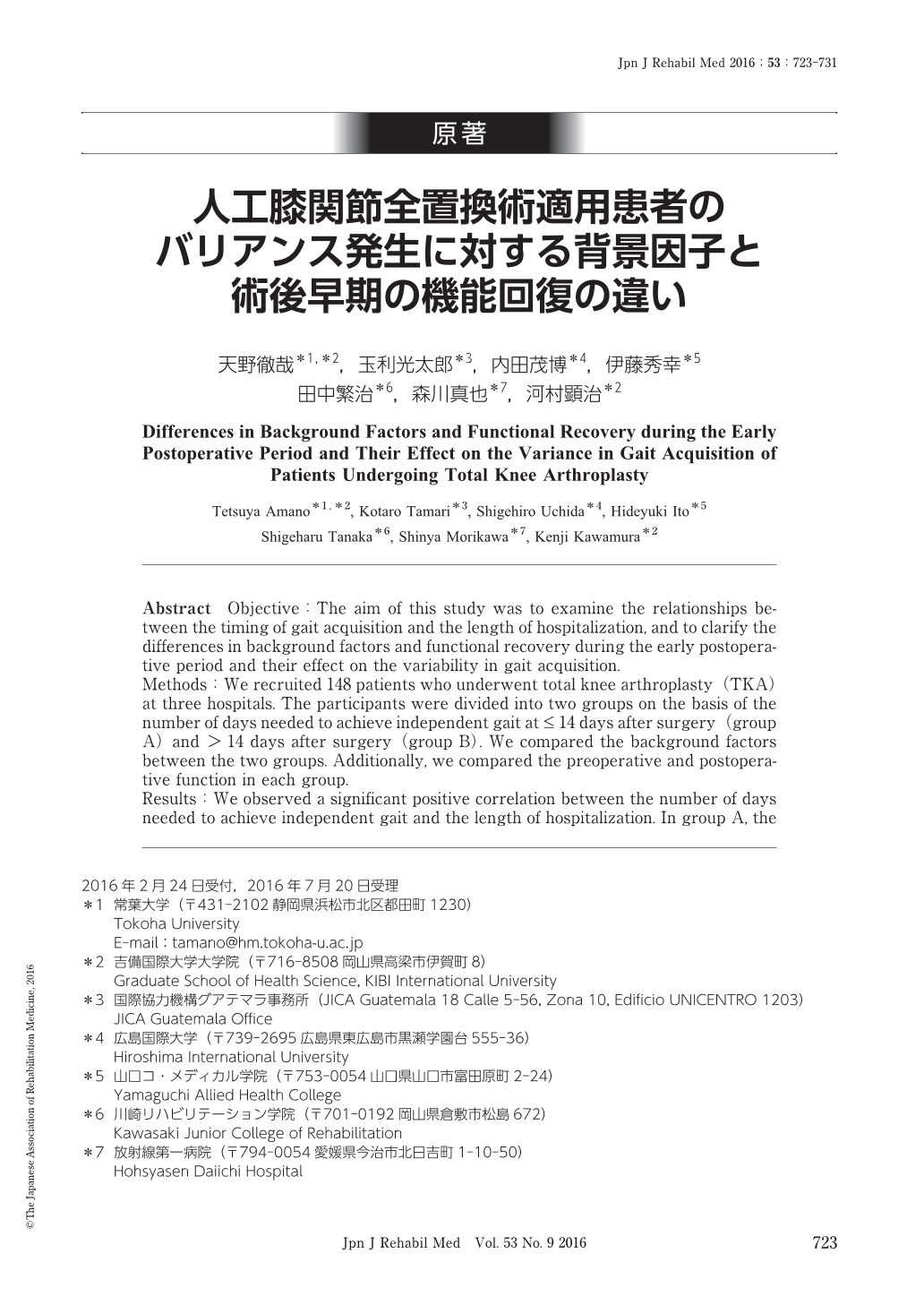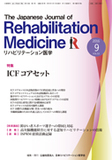Japanese
English
- 販売していません
- Abstract 文献概要
- 1ページ目 Look Inside
- 参考文献 Reference
要旨【目的】歩行獲得と在院日数の関係について検討し,バリアンス発生の有無に対する背景因子と術後早期の機能回復の違いを明らかにすることである.
【方法】TKA適用患者148名を対象に,歩行自立日数が術後14日以内の者をバリアンス非発生群,術後14日を超過した者をバリアンス発生群として,2群の背景因子と各群の術前機能と術後14日目の機能を比較した.
【結果】歩行自立日数と在院日数との間には,有意な正の相関が認められた.バリアンス非発生群はバリアンス発生群と比較して年齢が若く,術前の活動性が高かった.バリアンス非発生群の術後14日目の術側膝伸展ROMと疼痛は,術前機能と比較して有意な改善が認められた.一方,両群とも術後14日目の術側・非術側膝伸展筋力,術側膝屈曲筋力,術側膝屈曲ROMと歩行速度は,術前機能と比較して有意に低下していた.
【結論】歩行獲得を目的とした早期リハビリテーションでは,年齢と術前の活動性を考慮するとともに,炎症症状の改善による疼痛軽減と膝関節伸展角度の獲得に着目すべきであると考える.
Abstract Objective:The aim of this study was to examine the relationships between the timing of gait acquisition and the length of hospitalization, and to clarify the differences in background factors and functional recovery during the early postoperative period and their effect on the variability in gait acquisition.
Methods:We recruited 148 patients who underwent total knee arthroplasty (TKA) at three hospitals. The participants were divided into two groups on the basis of the number of days needed to achieve independent gait at ≤ 14 days after surgery (group A) and > 14 days after surgery (group B). We compared the background factors between the two groups. Additionally, we compared the preoperative and postoperative function in each group.
Results:We observed a significant positive correlation between the number of days needed to achieve independent gait and the length of hospitalization. In group A, the significant background factors were younger age and higher preoperative activity level. In group A, compared with the level of preoperative function, the postoperative maximum knee extension angle on the operated side and pain had significantly improved. In both groups, the postoperative knee extensor strength on the operated side, knee extensor strength on the nonoperated side, knee flexion strength on the operated side, maximum knee flexion angle on the operated side, and walking speed were significantly reduced.
Conclusion:During early rehabilitation, it is necessary to consider the age and previous activities of patients. In addition, we suggest that early rehabilitation with a focus on reducing pain by alleviating inflammation and improving maximum knee extension angle on the operated side may be effective for fast acquisition of gait.

Copyright © 2016, The Japanese Association of Rehabilitation Medicine. All rights reserved.


